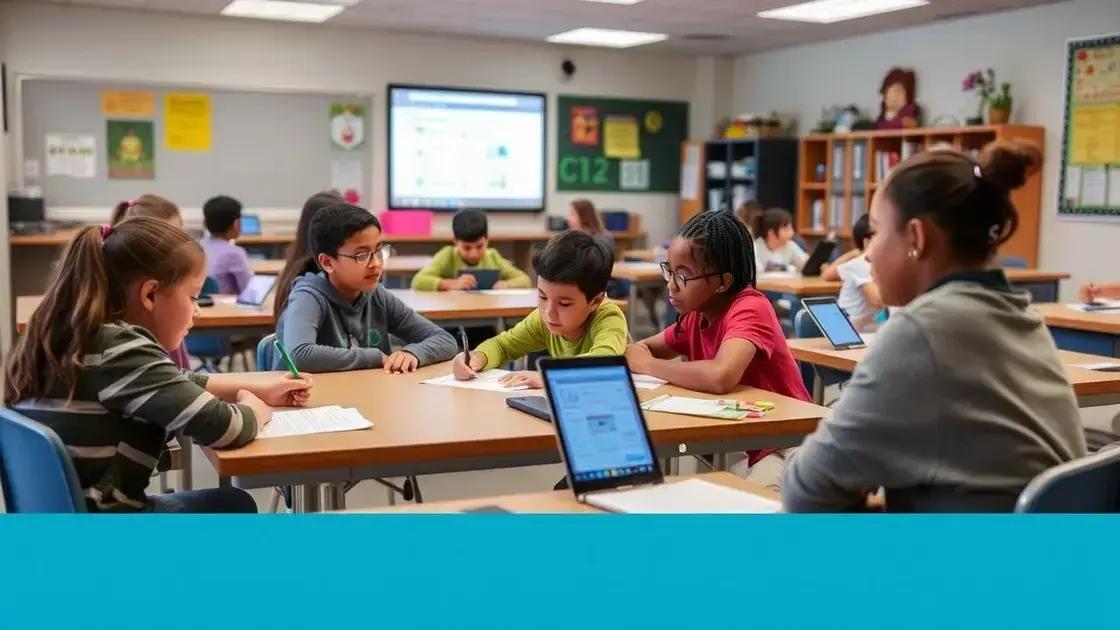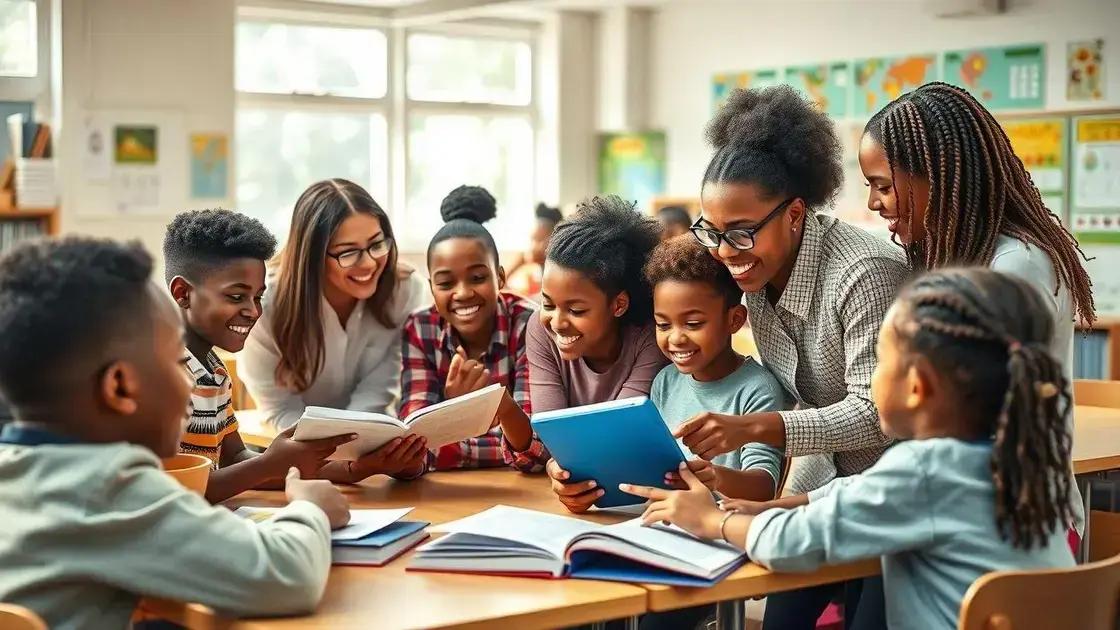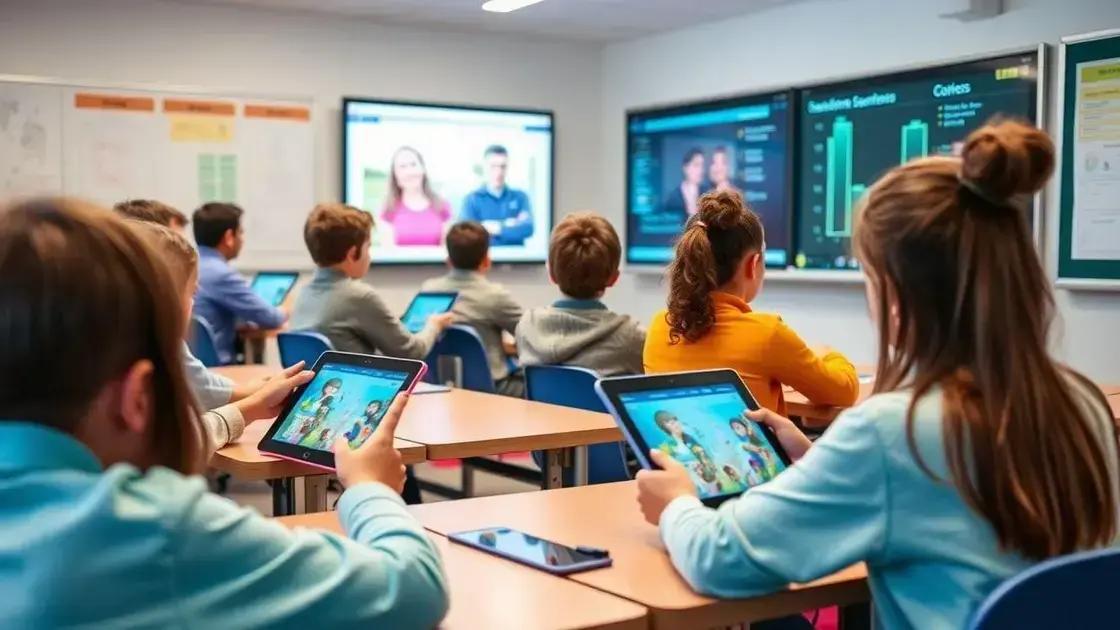Education reforms 2025: What changes are on the horizon?

Anúncios
Education reforms 2025 focus on empowering students through personalized learning, enhancing teacher support, integrating technology, and fostering collaboration between schools and communities to create a more inclusive and effective educational system.
Education reforms 2025 are set to transform how we learn and teach. Have you considered how these changes might impact your experience in the classroom? Let’s dive into the details.
Anúncios
Understanding the key goals of education reforms 2025
The key goals of education reforms 2025 focus on improving the quality of learning and ensuring that students are well-prepared for the future. These reforms aim to create an educational system that is more inclusive, equitable, and effective.
Enhancing Student Engagement
One of the main goals is to enhance student engagement. This means making learning more interactive and enjoyable. When students are engaged, they tend to perform better. Innovative teaching methods will encourage critical thinking and creativity.
Preparing Students for Future Careers
Another important aspect is preparing students for future careers. The world is changing fast, and education needs to keep up. Schools will focus more on skills that are in high demand, such as technology and problem-solving.
Anúncios
- Integrating technology into the classroom.
- Fostering collaboration among students.
- Encouraging real-world problem-solving.
- Developing communication skills.
Furthermore, education reforms 2025 aim to promote equality within the education system. All students should have access to the same quality of education, regardless of their background. This equity will support all learners in reaching their full potential.
Implementing Comprehensive Support Systems
Comprehensive support systems will also play a crucial role. Schools will provide additional resources to help those who may be falling behind. This will create a safer and more supportive learning environment.
- Offering tutoring and mentorship programs.
- Providing mental health resources.
- Creating partnerships with local organizations.
- Engaging families in the learning process.
Overall, understanding the key goals of education reforms 2025 helps us recognize the direction in which education is headed. By focusing on engagement, preparation, and equity, we can create a better future for all students.
Innovative teaching methods for the future
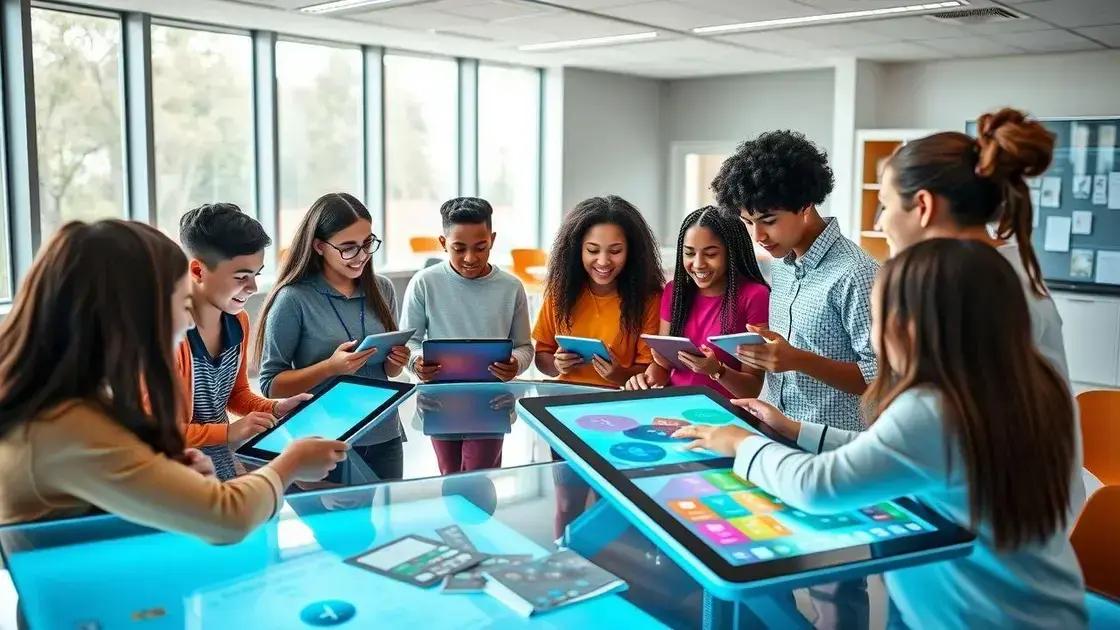
Innovative teaching methods for the future are essential to adapting education to meet the needs of today’s students. With the advancements in technology and understanding of learning styles, teachers are finding new ways to engage their students.
Project-Based Learning
One effective approach is project-based learning. This method encourages students to work on real-world problems over an extended period. They learn by doing, which enhances their critical thinking and collaboration skills.
In project-based learning, students:
- Research topics of interest.
- Collaborate with classmates for diverse perspectives.
- Present their findings to peers or the community.
- Reflect on their learning processes.
Such experiences not only deepen understanding but also help students feel more connected to their learning.
Flipped Classroom Model
Another innovative method is the flipped classroom model. In this approach, traditional lecture models are reversed. Students engage with new material at home through videos or readings, freeing up classroom time for discussion and hands-on activities.
This model allows teachers to:
- Offer personalized assistance during class time.
- Encourage interactive discussions.
- Utilize technology to enhance learning.
- Address students’ individual learning paces.
As a result, students take control of their education while benefiting from direct teacher support during critical thinking activities.
Furthermore, integrating technology in the classroom emphasizes the importance of digital literacy. Tools such as educational apps and online resources can enhance lesson engagement and provide diverse formats for learning. Schools can use interactive platforms that encourage students to explore and discover.
Game-Based Learning
Lastly, game-based learning taps into students’ love for play. Incorporating educational games into lessons can transform monotonous subjects into exciting challenges. Students remain motivated while they learn, enhancing retention and understanding.
Benefits of game-based learning include:
- Encouraging teamwork and collaboration.
- Fostering problem-solving and decision-making skills.
- Enhancing motivation through rewards and achievements.
- Creating a safe space for failure and learning.
With innovative teaching methods like these, educators are better equipped to prepare students for the future. By making learning engaging and relevant, schools can help students thrive in an ever-evolving world.
The role of technology in education changes
The role of technology in education changes is becoming increasingly crucial. As we move towards a more digital world, educators are embracing new tools that reshape how knowledge is delivered and received.
Enhanced Learning Experiences
Technology makes learning more engaging and interactive. Smartboards and tablets in classrooms allow for dynamic lessons that hold students’ interest. With these tools, teachers can present information in various formats, such as videos, simulations, and interactive apps.
Moreover, these tools facilitate personalized learning. Each student can learn at their own pace, allowing them to progress when they are ready. This method supports different learning styles, making education more inclusive.
Access to Resources and Information
Access to information has expanded greatly. Students can now explore vast amounts of data and educational resources online. They can find articles, videos, and tutorials that enhance their understanding of complex subjects.
Additionally, online platforms and libraries offer numerous learning opportunities, enabling students to delve deeper into topics of interest. This accessibility helps bridge the gap for students who might not have the same resources at home.
- Online courses and MOOCs provide global learning access.
- Educational apps facilitate skill practice and reinforcement.
- Virtual reality experiences immerse students in subjects.
- Online forums foster collaboration and discussion.
Technology also connects students with peers and experts from around the world. Virtual classrooms allow learners to collaborate with others, sharing perspectives and experiences. This global interaction enriches their education.
Preparing for Future Careers
The integration of technology prepares students for future careers where digital skills are vital. Learning to use various software and tools makes students more competitive in the job market.
Incorporating coding, data analysis, and digital communication into the curriculum equips students with essential skills for modern workplaces. As technology evolves, schools must adapt to ensure students are ready for challenges ahead.
Through these changes, it is clear that technology plays a vital role in shaping education. Embracing these advancements can create innovative learning environments that foster growth and curiosity.
How these reforms will affect students and teachers
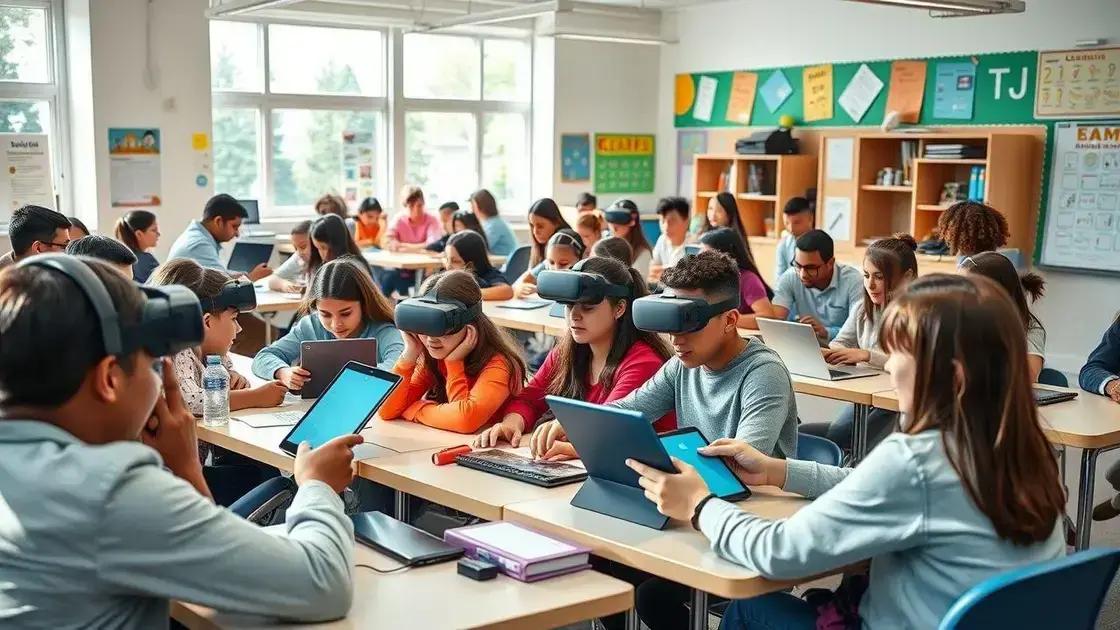
How these reforms will affect students and teachers is a critical aspect to consider. Education reforms 2025 are designed to create a more engaging and supportive learning environment, which will transform the educational experience for both students and educators.
Empowering Students
One of the main effects of these reforms is that students will find themselves more empowered in their learning journeys. With personalized learning paths, students can learn at their own pace. This allows them to explore subjects that interest them deeply, leading to greater motivation and understanding.
Students will also benefit from enhanced collaboration opportunities. By participating in group projects and discussions, they can develop essential communication and teamwork skills. In this new framework, students are not just passive recipients of knowledge; they become active participants in their education.
Supporting Teachers
Teachers, too, will see significant changes in their roles. With the implementation of these reforms, instructors will receive more resources and training to adapt to new teaching methods. Professional development programs will focus on innovative strategies that promote student engagement and critical thinking.
Additionally, educators will have access to technology that can simplify lesson planning and grading, allowing them to spend more time with students. This shift enables teachers to concentrate on providing personalized feedback and support, fostering a more meaningful student-teacher relationship.
- Enhanced teaching resources and training opportunities.
- More collaboration among teachers across disciplines.
- Increased focus on student feedback and assessment.
- Flexible classroom environments to support diverse learning styles.
As a result, the changes will lead to increased job satisfaction among teachers. They will feel more equipped to meet the challenges of modern education, which in turn can positively impact student learning outcomes.
Creating a Collaborative Educational Community
Finally, education reforms 2025 aim to build a stronger collaboration between schools, families, and communities. By involving parents in the learning process, schools can create a supportive environment that extends beyond the classroom. This partnership can help reinforce learning objectives and promote student success.
Overall, these reforms are set to create a more inclusive, engaging, and effective educational experience for both students and teachers. By embracing these changes, we can envision a brighter future for education.
In summary, the transformative nature of education reforms 2025 carries significant implications for both students and teachers. By empowering students through personalized learning and engagement, these reforms foster a more inclusive and supportive educational environment. Teachers will benefit from enhanced resources, professional development, and a focus on collaboration, allowing them to guide students more effectively. Ultimately, the changes aim to create a vibrant educational community that prepares students for the challenges ahead while nurturing their potential.
FAQ – Frequently Asked Questions About Education Reforms 2025
What are the main goals of education reforms 2025?
The main goals include enhancing student engagement, improving educational equity, and better preparing students for future careers.
How will these reforms impact teachers?
Teachers will receive more resources and training, allowing them to better support students and focus on innovative teaching methods.
What role does technology play in these reforms?
Technology enhances learning experiences, providing access to resources and facilitating personalized education for all students.
How can parents get involved in the education process?
Parents can engage by participating in school events, providing feedback, and supporting learning at home, creating a collaborative educational community.

